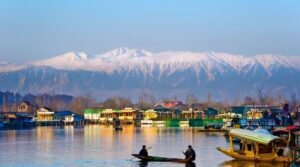Cannabis in the Himalayan Region: Origins & Varieties

Cannabis in the Himalayan Region
The Himalayan region, stretching across northern India, Pakistan, and Afghanistan, is one of the oldest and most significant areas for the growth of cannabis. This area is home to naturally occurring cannabis plants, cultivated varieties, and wild cannabis that have been used for centuries for religious, medicinal, and recreational purposes. The name “Kush,” famously associated with certain cannabis strains, originates from the Hindu Kush mountain range in this region. This article explores the different types of cannabis plants, their historical and cultural importance, and their connection to the Himalayan region.
The Types of Cannabis Plants
Cannabis plants are broadly classified into three primary types:
- Cannabis sativa
- Characteristics: Tall plants, thin leaves, and a longer flowering time.
- Effects: Sativa strains are known for their uplifting, energizing effects, making them ideal for daytime use.
- Origins: Native to warm climates, Cannabis sativa grows abundantly in lower Himalayan valleys, particularly in parts of India and Nepal.
- Cannabis indica
- Characteristics: Short, bushy plants with broader leaves and a shorter flowering time.
- Effects: Indica strains are associated with relaxing, sedative effects, suitable for stress relief and sleep.
- Origins: Native to colder, mountainous regions, Cannabis indica is prevalent in areas like the Hindu Kush mountains of Afghanistan and Pakistan, as well as parts of Himachal Pradesh and Kashmir.
- Cannabis ruderalis
- Characteristics: Small, hardy plants with low THC (tetrahydrocannabinol) content and a short lifecycle.
- Effects: Due to its low THC, ruderalis is not commonly used recreationally but is often bred with sativa and indica for autoflowering hybrids.
- Origins: Found in harsher climates, Cannabis ruderalis grows wild in parts of Central Asia and the Himalayan foothills.
Cannabis in the Himalayan Region
The Himalayan belt, encompassing India, Pakistan, and Afghanistan, is one of the most diverse cannabis-growing regions in the world. Cannabis plants have thrived here for thousands of years, benefiting from the ideal climatic conditions of the mountains: cool air, high altitudes, and fertile soil.
India
- Cannabis has been deeply embedded in Indian culture for millennia. The Vedas, ancient Hindu texts, refer to cannabis as one of the five sacred plants, calling it a source of happiness and liberation.
- The Himalayan states of Himachal Pradesh, Uttarakhand, and Jammu and Kashmir are particularly well-known for growing cannabis.
- Locally made charas (hand-rubbed cannabis resin) is famous worldwide for its potency. Villages in Malana, Himachal Pradesh, are renowned for producing “Malana Cream,” a premium-grade charas prized for its high THC content.
- Wild cannabis also grows naturally in the lower Himalayan valleys.
Pakistan
- The mountainous regions of Khyber Pakhtunkhwa, Baluchistan, and the northern areas near the Swat Valley are hubs for cannabis cultivation.
- Cannabis is traditionally used to produce hashish (called “charas” locally), which is deeply ingrained in the social and cultural life of the region.
- The rugged mountains of northern Pakistan provide the perfect environment for indica strains, which grow wild and abundantly.
Afghanistan
- Afghanistan is one of the largest producers of cannabis and hashish globally.
- The Hindu Kush mountains in Afghanistan are the origin of the famous Kush strains of cannabis, prized for their relaxing, sedative effects. These strains are genetically pure indicas, well-suited to the harsh, arid conditions of the region.
- Afghan farmers have traditionally been skilled in cannabis resin extraction, which is used to make high-quality hashish.
The Origin of the Name “Kush”
The term “Kush” is derived from the Hindu Kush mountain range, which spans Afghanistan, Pakistan, and parts of northern India. These mountains have been a historical hub for the cultivation of cannabis indica. The unique climatic conditions of the Hindu Kush—high altitudes, rocky terrain, and dry, cool weather—allowed for the evolution of resilient, hardy cannabis plants with distinctive properties.

Kush strains, such as Afghan Kush, Hindu Kush, and Purple Kush, are renowned for their potency, earthy aroma, and relaxing effects. The popularity of these strains in the global cannabis market has made “Kush” synonymous with high-quality indica cannabis.
Traditional Uses of Cannabis in the Region
- Religious and Cultural Significance:
- In India, cannabis is associated with the god Shiva, who is often depicted smoking a chillum (a traditional clay pipe). During festivals like Mahashivratri and Holi, cannabis-based drinks like bhang (made from cannabis leaves and milk) are consumed.
- In Afghanistan and Pakistan, cannabis resin (hashish) is a key part of local traditions, often shared in social gatherings.
- Medicinal Use:
- Cannabis has been used in Ayurveda and Unani medicine for centuries to treat conditions such as pain, insomnia, and digestive issues.
- The hardy strains of the Himalayas are also being studied for their high CBD (cannabidiol) content, which has therapeutic potential without psychoactive effects.
- Recreational Use:
- Cannabis is widely consumed in the form of charas or hashish, particularly in areas like Malana and the Parvati Valley in Himachal Pradesh, as well as the Swat Valley in Pakistan and parts of Afghanistan.
The Global Appeal of Himalayan Cannabis
Himalayan cannabis, particularly strains from the Hindu Kush, has played a pivotal role in shaping the global cannabis industry. Many modern hybrids, such as OG Kush, Bubba Kush, and Critical Kush, trace their lineage back to these regions. The genetic stability and potency of Himalayan strains make them a cornerstone for breeding new varieties.
Additionally, Himalayan charas and hashish are considered some of the finest in the world, commanding high prices in international markets.
Challenges and the Future
While cannabis is an integral part of the Himalayan culture and economy, its cultivation remains a contentious issue due to varying legal frameworks in India, Pakistan, and Afghanistan. Governments are beginning to explore the economic potential of regulated cannabis cultivation, particularly for medicinal and industrial use.
In India, states like Uttarakhand and Himachal Pradesh have started promoting hemp cultivation for industrial purposes, such as textiles, biofuel, and construction materials. Similarly, in Afghanistan, there is growing interest in exploring cannabis as a legitimate export product.






